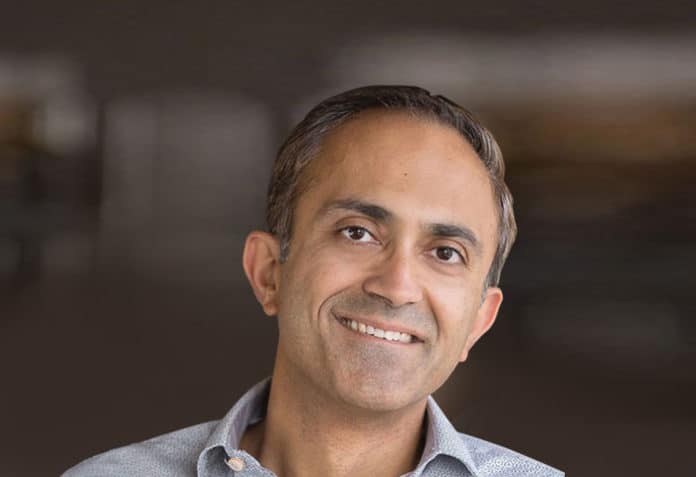Mike Anand, chief marketing officer, Redis, speaks with OSFY’s Abbinaya Kuzhanthaivel about the popularity of the company’s open source products and the growth of the Indian market. Among other things, he also talks about the new governance model the company has adopted. Some excerpts from the conversation…
Q. How important is India for Redis?
A. India is one of our fastest growing markets. We have been investing in the Indian market for a little over two years and have steadily increased our investments. We held one of our largest Redis Day events at Bengaluru in January 2020 with over 600 attendees. We have a wide range of customers in India including Freshworks, matrimony.com, SonyLIV and MyTeam11. For example, Freshworks relies on Redis Enterprise Cloud to run at least 67 services, which round off to around 30 million to 500 million requests per day.
It does feel like India has accelerated directly to the cloud and open source movement, skipping the whole on-premises software era. The customer base is in a growing phase, and the market here is quite great. Whenever we host an event, even our global user conference based in the US, we get a tremendous, remote response from our community in India.
We are expanding our local sales, solution architects, and customer support teams due to the popularity of the cloud in the country, be it individual developers or large enterprises. Because of this, we are seeing a lot of innovation across the Indian market, and are always looking out for talented individuals locally as we are growing not only in India, but also throughout Asia and Oceania.
Q. Who is the community leader at Redis?
A. We have focused over the past year to make Redis a community-driven open source project since its creator, Salvatore Sanfillippo, stepped back as lead maintainer. Salvatore managed Redis for more than 11 years before transitioning the management to a core team of long-time contributors to the project, which operates under a light-governance model. The core team is led by Yossi Gottlieb and Oran Agra, who come from Redis Ltd, and aided by Itamar Haber, another company and community veteran, to manage the community. The team is rounded off by Madelyn Olson from AWS and Alibaba’s Zhao Zhao, who have been actively involved in the development of Redis for several years.
Q. Can you tell us more about the changes at Redis with respect to governance?
A. It’s been 12 years since Redis was first introduced; so when an open source project gets to the scale Redis is in, there is a great focus on maintaining the project to improve the code, make it more secure, run faster, etc. It becomes a burden on a single person to manage these tasks and organise the community working on them. So when Salvatore first started to discuss stepping back from the lead maintainer’s role, it was important to consider what the new model would be to manage open source development for Redis.
Along with the company founders, Salvatore did feel a small group of people who had worked closely with him over the years would not only best understand the culture of the Redis project but also how and where it could be improved with community involvement.
Initially, the biggest effort the new core team focused on was making it easy for community members to understand how and where their contributions would help in the development of Redis. We did feel it was important to acknowledge the milestone of the first ‘community-driven’ release less than nine months after the leadership change in the Redis project. What is most gratifying, aside from some significant improvements, is that there were 35 contributors to this release outside the core team members. Notably, there has been a 56 per cent year over year (YoY) increase in pull requests (PRs) created and 156 per cent PRs closed on the Redis open source Git project. There has also been an 86 per cent YoY increase in Redis project Git authors.
Q. Is the systems integrators segment important for Redis, or is dealing directly with customers preferred?
A. We sell through the channel that works best for the customer and is the most effective in the region. We sell directly and also through partners; the latter are both systems integrators and the three major cloud service providers––AWS, Google Cloud, and Microsoft Azure. As an open source company, our partner programme is dedicated to the three clouds that provide unique value propositions, both in the managed Redis services that are offered and also how they can be consumed through the cloud marketplaces. The latter have recently become an increasingly popular way for customers to both try and purchase managed services like Redis Enterprise Cloud.
Q. What is the current licensing model of Redis?
A. Redis has and always will be open source (BSD licensed). However, commercial Redis Enterprise products are closed source and require a commercial licence. The modules, which are add-ons that offer enhanced capabilities such as adding new data models to Redis, are licensed under the Redis Source Available License (RSAL) if they are developed by Redis Ltd.
Q. Does the committee or the governance body deal with conflicts in the sector?
A. One of the biggest challenges in managing an open source project is prioritising work and reviewing PRs before they are accepted. The new governance structure is enabling improvements and fixes to be addressed in an organised way alongside new advancements in the project. The core team manages the projects in both directions––first in making calls to see where the community can help and also reviewing these updates before they are merged into the code. The decisions on all these issues are taken by the core team with the guiding principles of what has made Redis popular — striving for simplicity, solving fewer problems but in a better way, and doing the right thing by default, with the ultimate pursuit of delivering speed and efficiency.
Q. How do you position Redis vis-a-vis the other competitors?
A. People prefer fast and interactive experiences, so with its performance and ease of usage, Redis is the most loved database. This has been proven for five consecutive years according to Stack Overflow’s global developer survey. We have been named the most popular database for two years in a row on AWS in Sumo Logic’s research. Finally, and maybe most significantly, Redis recently advanced to become the sixth most popular database in DB-Engines’ independent analysis of approximately 350 databases.
I believe that Redis gets its popularity from two facts. First, it was born in the cloud, and can be easily adopted. It also can be used for a variety of applications and use cases that developers are trying to find solutions for, in an easy and efficient way. Most cases requiring real-time performance prefer Redis for its uniqueness of setting the bar for real-time to sub-millisecond performance.
Though there are a lot of people offering databases based on performance, Redis offers performance with the scalability and flexibility to be hybrid and multi-cloud. By multi-cloud, I mean, being able to have the same app in different clouds, as opposed to having different apps on different clouds. Our ability to offer geo-distribution capabilities at low local latency for the end user of an app is the differentiating factor. If your data is distributed, how are you going to get it faster to your customers at their fingertips? This is where Redis’s enterprise-grade capabilities come to play and enable us to win.
Q. Do you focus on cloud developers, making Redis a preferable option for cloud applications, and not critical for on-premise use?
A. The fastest growing developer community is cloud developers. That is where the opportunity is at, and we would love to get more of them. But the reality is that we have cloud, on-premises, and open source developers who already use or want to use Redis. The demand we are seeing from developers is to apply Redis in new areas through modern data models. These models like JSON, Time series, Graph, and more can help give developers greater flexibility to build apps and are becoming quite popular. They don’t require the app to conform to your database in a certain way. This innovation across different data models within Redis provides developers the ability to store the type of data they want for their app without having to translate and change it to another database.
We are seeing this phenomenon from greenfield to brownfield applications. It all comes down to the digital experience developers are trying to build and scale to. If you are going to scale it to the level of growth at Freshworks or SonyLIV, for example, then you need to have high availability for peak events in a cost-effective way.
Q. How is Redis positioned in terms of pricing?
A. We have benchmarks that show Redis Enterprise Cloud is one of the most cost-effective data platforms, at scale. When it comes to its adoption by developers, we want to make things easy. You can use Redis Enterprise Cloud for free with up to 30 megabytes of storage and advanced data model capabilities. We then allow customers to grow based on their needs. At the end of the day, however, we win on value. I would rather compete on the services, features and support that I offer to our customers.
Q. Can you shed some light on the initial public offering (IPO) plans?
A. Our focus is on the continual growth of the business and building the Redis community as fast as we can. Our annual RedisConf this spring was the largest ever despite the challenges of entirely moving to a digital format for the second consecutive year due to the pandemic. Many customers and prospects engaged with each other, which was exciting to see in the face of online meeting fatigue. An IPO is just one of those milestones that will come in time, with the right market conditions.
We remain focused on hitting our business objectives as of now.
Q. Are there any broad numbers that you would like to share with respect to Redis?
A. This year, close to 5,000 people attended our live sessions at our second virtual RedisConf. One of the stats that we are looking at very closely is Docker launches of Redis databases. At the beginning of 2021, an average of 6 million Redis databases launched from Docker Hub daily. To understand why this shows the vibrancy of Redis, that’s more than double any other database, including MongoDB. Following this year’s RedisConf, we’ve seen that rise to 7 million launches daily.












































































